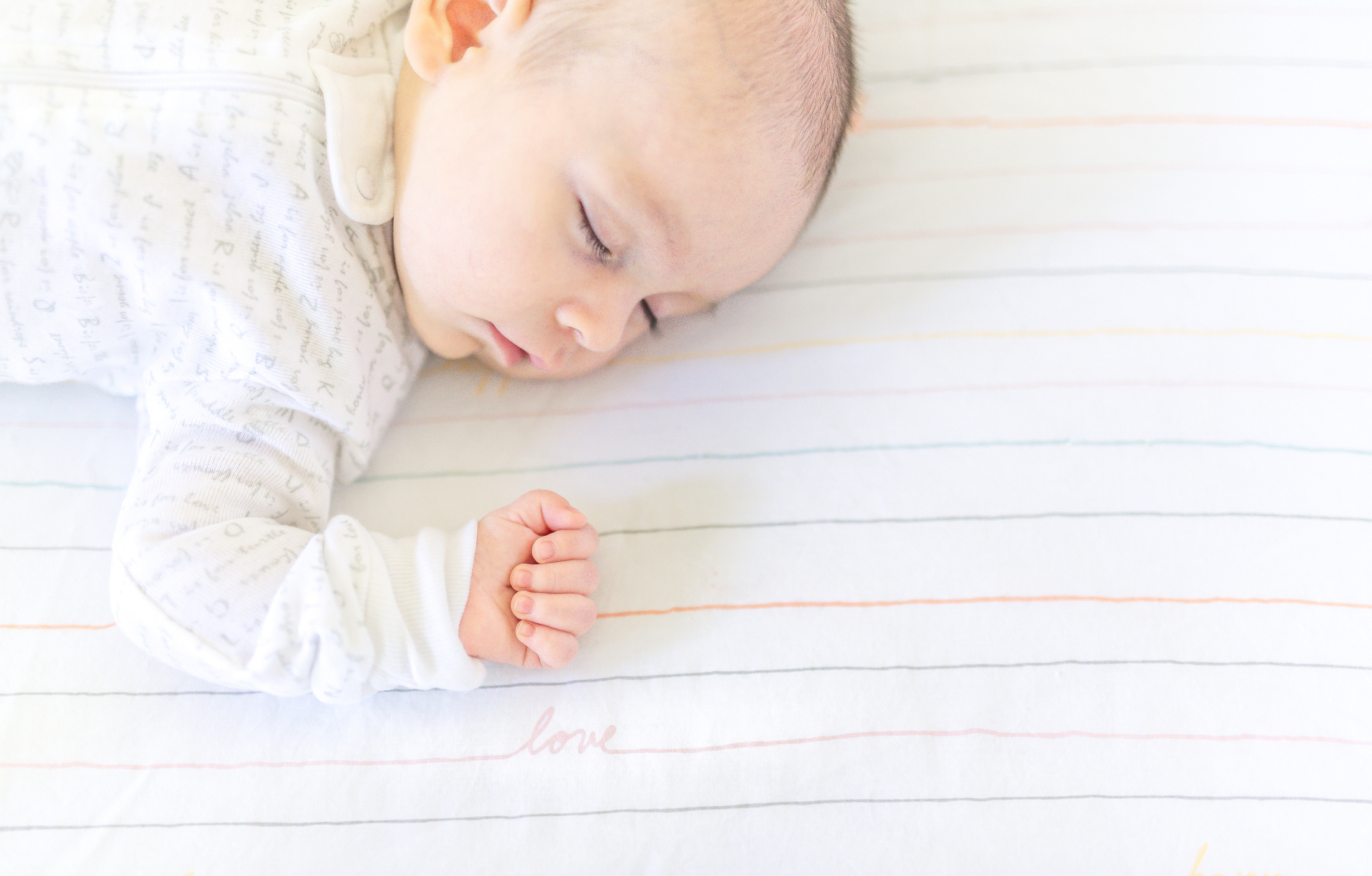Infant Safe Sleep

Helping Babies Sleep Safely
According to the CDC, there are about 3,400 sleep-related deaths among US babies each year. Parents and caregivers can help create a safe sleep area for babies by taking the following steps:
- Place your baby on his or her back for all sleep times—naps and at night. Even if a baby spits up during sleep, babies’ anatomy and gag reflex help prevent them from choking while sleeping on their backs. Babies who sleep on their backs are much less likely to die of SIDS than babies who sleep on their sides or stomachs.
- Use a firm, flat sleep surface, such as a mattress covered only by a fitted sheet. Some parents and caretakers might feel they should place their baby on a soft surface to help the be more comfortable while sleeping. However, soft surfaces can increase the risk of sleep-related death. A firm sleep surface helps reduce the risk of SIDS and suffocation.
- Keep your baby’s sleep area (for example, a crib or bassinet) in the same room where you sleep until your baby is at least 6 months old, or ideally, until your baby is one year old. Accidental suffocation or strangulation can happen when a baby is sleeping in an adult bed or other unsafe sleep surfaces. Sharing a room with your baby is much safer than bed sharing and may decrease the risk of SIDS by as much as 50%. Also, placing the crib close to your bed so that the baby is within view and reach can also help make it easier to feed, comfort, and monitor your baby.
- Learn how to create a safe sleep environment for baby in your home by exploring an Interactive Safe Sleep Environment from Safe to Sleep®. Keep soft bedding such as blankets, pillows, bumper pads, and soft toys out of your baby’s sleep area. Additionally, do not cover your baby’s head or allow your baby to get too hot. Some parents may feel they should add sheets or blankets to their baby’s crib to help keep their baby warm and comfortable while sleeping. However, sheets, comforters, and blankets can increase the risk of suffocation or overheat your baby. If you’re worried about your baby getting cold during sleep, you can dress them in sleep clothing, like a wearable blanket.
Safety Tips
- Place babies on their backs to sleep every time, for naps and at night.
- Place your baby on a firm sleep surface, such as a safety-approved crib mattress covered with a fitted sheet.
- Keep soft objects, toys, and loose bedding out of your baby’s sleep area.
- Never use pillows, blankets, quilts, sheepskins, sleep positioning devices, or pillow-like bumpers in your baby’s sleep area.
- Avoid letting your baby overheat during sleep. (Dress your baby in light sleep clothing and keep the room at a temperature that is comfortable for an adult.)
- Never place a crib near a window with blind, curtain cords or baby monitor cords to prevent strangulation.
- Avoid bed sharing as it increases the risk of suffocation.
- Do not attempt to fix a broken crib; replace it.
Cribs for Kids safe sleep certification
Founded in 1998 by Judith A. Bannon, Cribs for Kids is a national infant safe-sleep education program that helps to reduce the risk of injury and death of infants due to accidental suffocation, asphyxia, or undetermined causes in unsafe sleeping environments. Visit cribsforkids.org for more information.
Cribs for Kids also certifies hospitals that have made a commitment to safe sleep practices and educating the public about safe sleep. Visit Cribs for Kids Hospital Certification for more information.
